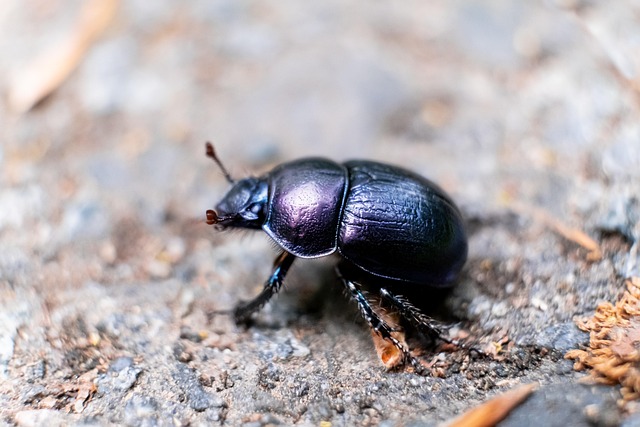Foreign grain beetles, aggressive agricultural pests, pose significant economic threats to stored grains. Professional exterminators offer comprehensive solutions, combining advanced inspection techniques with targeted treatments like chemical applications and heat therapies. Regular inspections, sealing entry points, and insect growth regulators are key in residential settings. Commercial operations require specialized strategies, including strategic baits and industrial-strength treatments, guided by pest control experts. Early detection, tailored solutions, and meticulous source elimination ensure effective foreign grain beetle removal and prevent future infestations across both residential and commercial environments.
Identifying and addressing foreign grain beetle infestations is crucial for maintaining food safety and preserving grains. These tiny invaders can cause significant damage to stored products, necessitating prompt action. This article guides you through understanding the behavior and breeding patterns of foreign grain beetles, exploring comprehensive inspection techniques for early detection. We delve into professional extermination methods suitable for residential and commercial settings, offering effective solutions for complete beetle control.
Understanding Foreign Grain Beetles: Behavior and Breeding Patterns
Foreign grain beetles, as the name suggests, are invasive species that pose a significant threat to various agricultural products, particularly stored grains. Understanding their behavior and breeding patterns is crucial for effective pest control. These tiny invaders often go unnoticed until they’ve established large colonies, leading to substantial economic losses in both residential and commercial settings.
These beetles prefer warm, dark, and moist environments, making stored grains an attractive food source. They breed rapidly, with female beetles laying hundreds of eggs in a short period. The larvae then feed on the grain, burrowing into the kernels and damaging the product beyond repair. Professional grain beetle extermination services employ specialized techniques and chemicals to target these pests effectively. Beetle control solutions include identifying breeding sites, sealing entry points, and treating infested areas with residual insecticides. Regular inspections and prompt action are key to preventing and managing foreign grain beetle infestations, ensuring the safety and integrity of stored grains in both residential and commercial facilities.
Comprehensive Inspection Techniques for Early Detection
Comprehensive inspections are key to early detection of beetle activity and breeding sites, especially for foreign grain beetles, which can cause significant damage in both residential and commercial settings. Professional exterminators employ advanced techniques such as visual examinations, pheromone traps, and moisture metrics to identify subtle signs of infestation. These methods allow for precise targeting of problem areas, ensuring effective foreign grain beetle removal and preventing further breeding.
By combining these meticulous inspection techniques with tailored pest control solutions, professionals can provide effective commercial grain beetle removal or residential grain beetle treatment. Customized plans addressing the specific needs of each location help to mitigate risks and ensure the successful implementation of beetle control solutions, keeping environments free from these pesky pests.
Professional Extermination Methods and Residential Treatments
Professional exterminators employ advanced methods to eliminate foreign grain beetles effectively. These treatments often involve a combination of targeted chemical applications and non-chemical strategies. For residential properties, a comprehensive approach is taken to ensure all breeding sites are identified and eradicated. This includes meticulous inspections, sealing entry points, and the use of insect growth regulators (IGRs) to disrupt beetle development cycles. IGRs are safe for humans and pets but inhibit the growth of beetles, providing long-lasting protection.
In commercial settings, or larger residential areas, a more extensive process is required due to the potential for broader infestation. Professional grain beetle extermination services may utilize heat treatments, which use precise temperature controls to kill adults, larvae, and eggs. Alternatively, physical removal methods like vacuuming can be employed, combined with strategic baits to lure and trap beetles. These professional grain beetle control solutions are tailored to the specific needs of each location, ensuring efficient foreign grain beetle removal and preventing future infestations.
Effective Commercial Grain Beetle Removal Strategies
Effective Commercial Grain Beetle Removal Strategies involve a multi-faceted approach to ensure complete and lasting elimination. The first step is conducting thorough inspections to identify breeding sites, which are often hidden in dark, moist areas where grains are stored. Professional pest control experts use advanced techniques like visual surveys, pheromone traps, and moisture meters to pinpoint these sites. Once detected, residential grain beetle treatment can include targeted applications of insecticides, but it’s crucial to also address the source of moisture and improve ventilation to disrupt the beetles’ life cycle.
For commercial grain beetle removal, specialized solutions are required given the larger scale and potential economic impact. These strategies may involve the use of industrial-strength insecticides, heat treatment, or even mechanical removal for severely infested areas. It’s essential to engage the services of experienced professionals who can implement these methods safely and effectively. By combining inspection, targeted treatments, and source elimination, businesses can achieve and maintain a beetle-free environment, protecting their inventory and upholding quality standards in the face of foreign grain beetle pest control challenges.
Comprehensive inspections and understanding the breeding patterns of foreign grain beetles are key to effective prevention and control. By employing advanced inspection techniques, professionals can swiftly identify active sites and implement tailored extermination strategies. For residential areas, targeted treatments ensure safe, efficient bug removal while commercial operations require scalable solutions. Integrating these methods allows for robust beetle control, mitigating potential damage caused by these pests, and safeguarding valuable grains and products.
